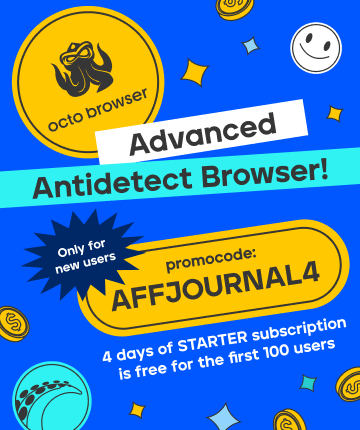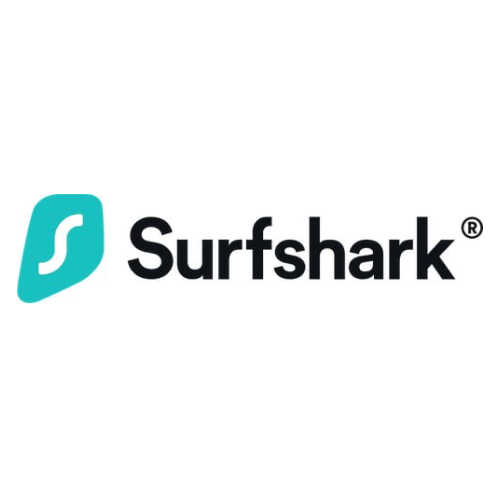

by Editor
Fraud is always a dishonest game in the spirit of lose-lose. Everyone remains a “loser”, although at first glance it seems that it is easy to get a profit at the expense of someone else. In the affiliate marketing business, fraud is highly discouraged, it is always brought to light, and attackers are punished. Consider the types of fraud in advertising, sales, arbitration in order to arm yourself with this knowledge and be able to protect yourself from intruders.
What is Fraud in CPA marketing
Fraud traffic in marketing means cheating by bots or non-target users. If the advertiser detects such fraud, then he cuts payments to the webmaster or blocks him in the affiliate program forever.
Engage in fraud — it is to attract a low-quality stream of visitors disguised as a high-quality one. It does not bring targeted actions and conversions, therefore it is not beneficial for advertisers and affiliate programs. For example, if an advertiser pays by CPA, CPL, CPI or CPC, then it drains its budget to no avail. Some even manage to scam on CPA, although this is more difficult. Fraud traffic can be bots or real people.
Types of Fraud in Affiliate Marketing
→Bot traffic. Usually purchased by a webmaster in cheat services. Bots are different:
- simple - a simple script with a static IP, run from a specific server (easy to calculate);
- smart - come from random proxies and dynamic IPs, can additionally imitate the actions of a real user (make test deposits, place orders, enter certain data);
- botnets - a group of bots that are more difficult to detect immediately, but they are given out by template behavior;
- based on artificial intelligence - used by cybercriminals, inaccessible to ordinary users.
→ Real People. In this case, fraud means attracting motivated traffic. The webmaster hires live performers who perform various targeted actions for payment. They click on the link, download applications, fill out forms, etc. It would seem that everything is fair, but such users do not bring conversions to the advertiser, as they are not interested in offers.
Another type of incentivized traffic is often used in mobile applications. The webmaster promises people money for performing targeted actions. For example, 10-20% of the amount of your commission if the user downloads any application from the list to his device. However, the advertiser does not need such clients, because they do not move beyond installing applications.
→ Mimicry under the advertiser. Froder copies the customer's website to bring traffic through it to the page of real advertising.
→ Cookie Stuffing. Means the substitution of cookies of some conscientious user. In this way, the froder convinces the advertiser that it was he who brought the leads, although none of his sites participated in the conversion funnel. Usually, cookies are stolen through the Toolbar, a toolbar in the browser where bookmarks and shortcut buttons to the necessary sites are stored. Froder installs a program for Toolbar such as "Currency Rates" or "Weather Forecast" with a virus code embedded in it. The user, without suspecting anything, downloads this extension, after which each of his transitions to the landing ad is counted as traffic from the webmaster. At the same time, it does not matter that the user entered from a third-party banner, contextual advertising of the brand itself, or entered a request in the search results. Thus, cookies are replaced with affiliate links, and clicks are counted in favor of the scammer.
→ Domain change. Often used on Facebook and other sites where there is strict ad moderation. The webmaster shows the algorithms one domain, and the user shows a completely different one.
But these methods of fraud are "gray" - they can be used, but only very carefully.
→ Contextual advertising under the brand. Fraud opens groups on social networks on behalf of the brand in order to gain an interested audience. Affiliates do not accept such traffic, as reputational risks are likely and brand rates are outbid in the context. However, if the brand is not yet so well-known, does not have its own resources for promotion in the context, such traffic can be accepted.
→ Traffic from sites 18+. This is when a webmaster places an affiliate link on porn resources. For example, offers of video games or offers for the delivery of ready-made food “shoot” well here. But this traffic is prohibited in many affiliate programs.
→ Spam. Why you shouldn't spam offers - because it annoys users. Promotion by email, SMS and push notifications should be organized with high quality and in moderation. But if the advertiser finds out that the affiliate is “bombing” with letters from potential clients, then it will cut such traffic and turn off the webmaster’s site. The same will happen if users do not give permission to receive mailings or the customer base is obtained illegally.
→ Mislead. This is when an affiliate deceives users by misrepresenting product characteristics. For example, false promises are used in promo, such as "the cream will rejuvenate your skin by 90% in 10 minutes." Advertisers do not welcome such advertising, as it misleads users.
→ Broker traffic. Fraud finds users' credit details and fills out microloan or loan applications on their behalf. In fact, he violates the rights of people, steals confidential information.
→ Clickander, popunder, pop-up. A kind of cookie stuffing, when advertising banners are opened regardless of whether the user wants to see them or not. They pop up when entering the webmaster's site, often cover the entire screen and force users to click on them. Some ads allow you to get traffic in this way.
The above lists only the main types of fraud. All of them are known to CPA-networks and are detected with a thorough check. Today, for the most part, fraud occurs in mobile traffic and is implemented through user motivation, smart bots, and install farms.
Examples of fraud in affiliate programs
Below are examples of how webmasters are fraud in various verticals.
→ Gambling. The webmaster promotes an offer of a casino where they pay for registration (CPL). Buys bots - specifies in the task to register on the advertiser's website using his affiliate link. He winds up 1000 registrations for a penny, hoping to receive a reward from the CPA-network and become a plus. Leads are credited to him, the amount is frozen on the account. However, he cannot withdraw money until the hold expires. After a while, the affiliate program checks the traffic quality and sees that none of these 1000 leads converted. The web is still waiting for the payment, but it receives a ban from the CPA network with blocking funds.
→ Installs. The webmaster wants to make money on the Hellhounds offer, where payment is made for installs. Webmaster decided to use a tricky scheme: buy views on 18+ sites, dilute them with incent traffic and a little contextual traffic. The resulting cocktail was launched for the offer. After 10 days, he was blocked, and he went to the forums to complain about the affiliate program.
→ E-commerce. The webmaster works with e-com, where they pay according to CPA - the client buys the product, but can return it within 1 month. The webmaster asks his friends (gives them money) and they place orders. After receiving the goods, "customers" immediately demand a refund, presenting some reasons (defect, etc.). The advertiser has no choice but to return the money and even the goods so that the reputation of the company does not suffer. The webmaster hopes that his fake leads will confirm, and he will receive his commission for transactions. However, such a scheme is quickly calculated - webmasters are blocked and can open a trial.
→ Nutra. The webmaster chose the 2G Slim offer. In order to attract more users, he began to promise quick weight loss in promo in just a week. He also wrote in the USP that the gel rejuvenates the skin by 100%. Customers became interested in the offer, began to switch, buy - but then they remained dissatisfied. They began to write negative reviews about the drug. The webmaster earned his commission, but the advertiser went into the red as he lost the trust of users.
→ Betting. The webmaster poured traffic to the bookmaker. According to the terms of the offer, it was necessary to find players who would make a deposit of $10. The commission for one such deposit is $40. Web decided to cheat: I invested $100 and opened deposits using my link from 10 different fake IPs. In this way, he expected a profit of $300. However, the anti-fraud system detected fraud within 30 days of the hold - these fake users did not show themselves in anything else, did not place bets. As a result, the web lost $100 on its "brilliant" idea.
→ Online stores. The affiliate promised everyone who buys headphones for the phone a free 3-month subscription from a mobile operator. Users followed the link and bought the accessory. But when they received the order, they refused the goods, since no bonus was expected. The advertiser figured out the fraud and turned off his site, as he was engaged in misleading - he made false promises.
→ Dating. The webmaster registered in the affiliate program and chose an offer. Indicated push format in traffic sources. I went to cheat services and ordered a task for $0.1 for registration using his affiliate link. I constantly twisted the transitions so that the antifraud system skipped registrations. But I got caught anyway, as affiliates of dating sites identified non-convertible traffic.
Fraud traffic - why you shouldn't use it
By attracting traffic in this way, you will definitely not make a successful career in affiliate marketing. This is what it threatens the webmaster specifically if the CPA-network detects cheating:
- permanent blocking of the profile in the affiliate program without payments;
- penalties;
- a lawsuit if the fraud caused serious losses to the company.
Therefore, cutting down the dough with this method is not the best idea. However, affiliate programs and the advertiser are not always able to immediately figure out the fraud, especially if he ate the dog in this case. Therefore, the problem is large-scale and frankly big. So, back in 2015, Distill Networks calculated that more than $ 18 billion goes to frauds.
Antifraud systems in affiliate programs: how they work
Large affiliate networks like Admitad have long ago created their own automatic fraud calculation systems, including the most intricate violations. The verification report is sent not only to advertiser managers, but also to webmasters - they warn them, because it is possible that the actions were used out of ignorance or mistake.
Other affiliate programs are simpler, but no less effective. They also use special anti-fraud systems that respond to certain signals:
- an abnormal number of transitions in a short time;
- too high click rate for one IP or ID;
- GEO mismatch of the same target user;
- low conversion with a large flow of traffic;
- browser code mismatch;
- pattern behavior of visitors;
- quick completion of the target action after entering the site;
- high activity at night;
- short user lifetime - 3 days or less.
Among the tools, they usually use services like Kraken, Forensiq, FraudShield and others. Thus, anti-fraud systems regularly monitor user behavior while working with a large amount of data.

Dashboard in FraudShield
FAQ
What is fraud in affiliate marketing?
Fraud in CPA marketing is the attraction by a webmaster of traffic prohibited by the terms of the offer.
What will the partner do if she finds out about the fraud?
Disconnect from the offer - at best. But they usually block the profile and may even open legal proceedings if the advertiser loses large amounts of money.
Is it possible to make money on fraud traffic?
Recently, it is almost impossible, since sooner or later the fraud is calculated. In the best case, the fraud will earn at the beginning, but then lose more if he does not switch to another affiliate program in time.
What is the difference between fraud and spam?
Spam is a kind of "gray" fraud, when traffic is attracted along the verge of allowed and prohibited methods.
How to make money on affiliate programs without fraud?
Use allowed ways to attract traffic - target, context, push. The rating of affiliate programs will help you choose a high-quality CPA network.
Is doorway a fraud?
No, since doorways attract pure organic traffic. Officially, it is not prohibited if the doorways are white - with content that is interesting to users.
How can an affiliate program recognize fraud?
With the help of anti-fraud programs that calculate suspicious user actions - ID / IP mismatch, a large number of clicks in a short period of time, etc.
Is there a difference between incentivized traffic and fraud?
There is still a small difference, since some advertisements even benefit from such traffic. But provided that the conversion from leads is not low

by Editor



comments ....(0)
Leave a comment
You must be in to leave a comment